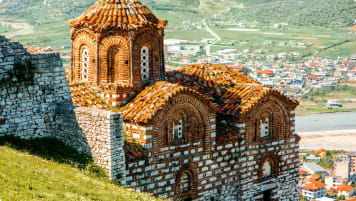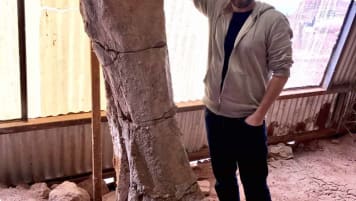Uncovering the History of Albania: The Definitive Guide for Travellers
Uncovering Albanian History Albania sits on the Ionian and Adriatic Seas in southern Europe, bounded by Montenegro, Kosovo, Macedonia, and Greece. This small and mountainous country in the Balkan peninsula had roots in ancient Illyria,…
16 Jan 19 · 9 mins read
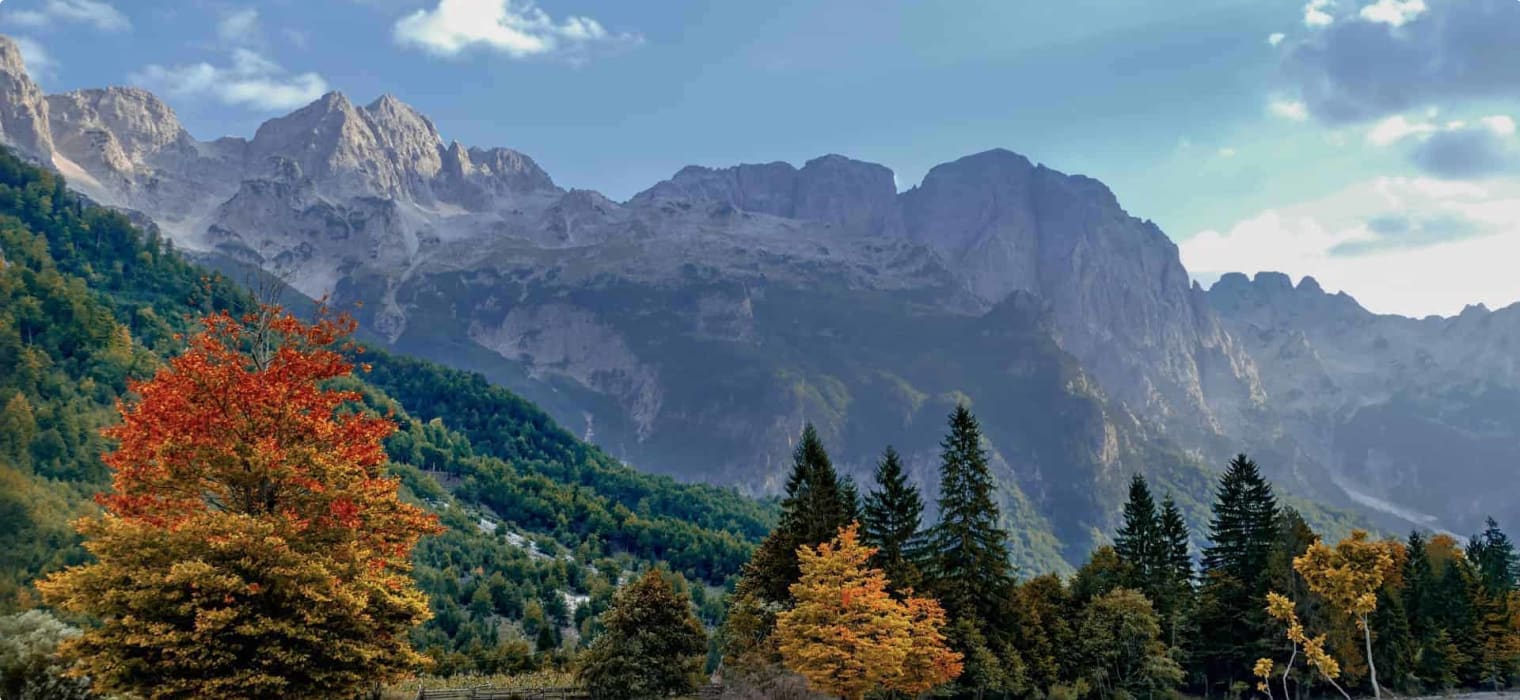
Uncovering Albanian History
Albania sits on the Ionian and Adriatic Seas in southern Europe, bounded by Montenegro, Kosovo, Macedonia, and Greece. This small and mountainous country in the Balkan peninsula had roots in ancient Illyria, and existed in relative isolation for many centuries until its transition to democracy in the 1990s. What was once “Europe’s enigma” now welcomes curious travellers who want to behold Albania’s picturesque mountains, beaches, and ancient cities.


In this post, we will uncover Albania’s long history and the sites that embody its cultural heritage– kept hidden from most of the world until the 20th century.
From Illyria to Albania
Albanians refer to themselves as shqiptarë (“sons of eagles”) and to their country as Shqipëria (“land of eagles”). (Some scholars say the word is derived from the name of the Albanian language itself, “shqip”.) They were said to be descendants of the Indo-European tribes collectively called the Illyrians after the name of the Balkan region where they settled in the Bronze Age.
The Illyrians traded amber with other Mediterranean people and traders in Europe, and became the state of Illyria, mixing with the Celts (who sailed down the River Danube from Gaul, a region in Western Europe including present-day France) and conquering Greek colonies.
Illyria had frequent clashes with the Romans, and fell to Roman conquest in the 2nd century BC. The Illyrians continued to push back against the invasion in the many years that followed, until their final defeat in 12 AD. (Read more about the Illyrians in our article.)
The Romans ruled Illyria, now Illyricum, for about six centuries. (You may read more about the Roman Empire in our article here.) The impact of this and succeeding invasions would transform the tribes of Illyria. In the 2nd century the “Albanoi tribe” was mentioned for the first time by geographer Ptolemy of Alexandria, living south of the Illyrian territory in a Roman province called Epirus Nova, now the centre of modern Albania. The single tribe’s name soon spread to include the rest of the country.
After the Roman Empire split into two in 395, the territories of what is now modern Albania fell under the Byzantine Empire (the Roman Empire’s eastern arm). The Balkan Peninsula would suffer from sieges of the Visigoths, Huns, and Slavs, as the so-called “barbarian” tribes migrated into the former colonies of the Roman Empire.
Christianity had long replaced the pagan polytheism Albania had inherited from the Greeks and the Romans, but during Byzantine rule Albanian Christians remained under the Roman pope’s jurisdiction, and even supported Rome in the Iconoclastic Controversy (dispute over the use of religious images) of the 8th and 9th centuries. In 732, the Byzantine Emperor Leo III, angered by the Albanian bishops’ loyalty to Rome, detached the Albanian church from the Roman pope and placed it under the jurisdiction of the patriarch of Constantinople. When the Christian church became divided in 1054 between the Roman Catholic church and the Eastern Orthodox church, Albania itself was cut in two: southern Albania retained its tie to the East while northern Albania reverted to the jurisdiction of the Roman pope.
As the Byzantine Empire weakened, parts of Albania became besieged by more foreign powers, including the Bulgarians and the Normans. In 1272, Charles I (or Charles of Anjou) from Italy’s Angevin dynasty led conquests into Byzantine territories in the Balkans and was proclaimed King of Albania. The Kingdom of Albania fell under the Serbians in 1347. After nearly a millennium, Byzantine rule in Albania came to an end in the mid-14th century.
By this time the Ottoman Turks were moving into the Balkans. They invaded Albania in the 15th century and would rule the territory for more than four centuries, cutting off Albania from Christian Europe and from participating in the Renaissance.
Religious schism in Albania, already present with the Christian division in the middle ages, was exacerbated during the country’s Islamization under the Ottomans in the 16th century. About a fourth of the Albanian population fled the country, while many who remained converted to Islam to avoid the violence and the heavy taxes levied on non-Muslims.
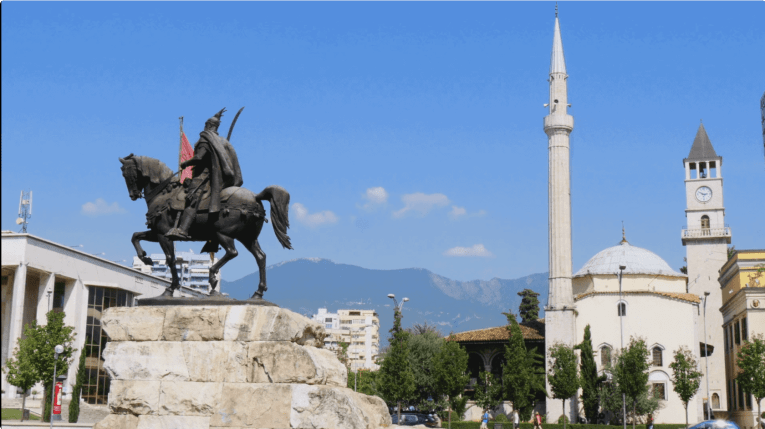
Principality of Albania
Following the rise of Albanian nationalism and armed struggle against Turkey in the Balkan Wars of the 19th century, Albania was declared independent in 1912. Ambassadors from the great powers of Europe—United Kingdom, France, Germany, Austro-Hungary, Russia, and Italy—convened in the London Conference in order to arbitrate between the warring countries over territorial acquisitions and to determine the future of Albania.
In the Conference, Albanian independence was recognised but its borders were redrawn, a move which ultimately proved problematic as it left more than half of ethnic Albanians outside of Albania, while ethnic Greeks suddenly found themselves in a new country and a large number of ethnic Albanians were placed under Serbian rule.
The great powers also appointed a ruler for the new Principality of Albania, Wilhelm zu Wied, a German prince who was unfamiliar with Albania and who left after only six months. With no central leadership and with war breaking in Europe, Albania was plunged into chaos. The local Greek population in the south revolted and declared an autonomous republic, and the rest of the country was occupied by armies from Italy, Serbia, Greece, and France.
Albania’s east-west dichotomy would be magnified with the division of Albanian society in the 1920s. On one side was the conservative Ahmed Bey Zogu who clung to the country’s Ottoman and feudal past, and on the other was the American-educated Orthodox bishop Fan S. Noli, who wanted to modernise (and Westernise) Albania.
Zogu would rule Albania as president (1925–28) and as King Zog I (1928–39) for 14 years.
World War II and the new Republic
Albania was subjugated by Italy and its fascist dictator Benito Mussolini in 1939, making it one of the first countries to be occupied by Axis powers in World War II. (King Zog escaped to Greece.) After Italy surrendered to Allied forces in 1943, Nazi Germany marched into Albania.
In the midst of war and foreign occupation, the communist groups that formed under Zog’s dictatorial reign coalesced to form the Albanian Communist Party in 1941 (headed by Stalinist Enver Hoxha) and began to fight against invasion as a united front. They seized control of the country on November 29, 1944, and in 1946 proclaimed the formation of the People’s Republic of Albania (later the People’s Socialist Republic of Albania) with Hoxha as its leader.
With economic and political support from the communist nations of Yugoslavia, China, and the Soviet Union, the party redistributed land and undertook a modernisation program to industrialise agrarian Albania.
Domestic rule did not eliminate political oppression: Albanians, excluding those on official business, were forbidden to travel abroad, and those critical of the government were forced into labour camps or executed. After centuries under the Ottomans, Albania had become a predominantly Muslim country with a Christian minority; however, in 1967 the communist party officially proclaimed Albania an atheistic country and closed all places of worship and banned religious practice.
Communism fell in eastern Europe in 1989, and Hoxha’s successor Ramiz Alia introduced gradual reforms, allowing foreign travel for Albanian citizens and the entry of foreign investments. In December 1990, Alia endorsed the creation of independent political parties, and in 1992 the Democratic Party gained a decisive electoral victory, ending nearly half a century of absolute communist rule.
Later years saw isolationist Albania reintegrating into the Western world. The Republic of Albania joined the North Atlantic Treaty Organisation (NATO) in 2009 and started its accession process to the European Union in 2014.
Travelling to Albania
Many tourists visit Albania to experience its natural beauty and view the ruins of monuments left behind by the Romans, Byzantines, and Ottomans. It is a worthy stop in a trip to the Balkans, which usually includes trips to nearby Croatia, Bosnia and Herzegovina, and Serbia.
The 2400-year-old city of Berat, originally an Illyrian settlement, is considered a highlight. Located in southern Albania, it was known by many names throughout its long history: Antipatreia (Greek period), Pulcheriopolis (Byzantine), Beligrad (Bulgarian), and Berat (Ottoman). It is famous for its castle, Berat Castle, built on a hill in what is now the neighbourhood of Kala. The castle was strengthened by the Byzantines and still stands and houses a considerable portion of the city’s inhabitants behind the citadel walls.
Many of the buildings inside the fortress were built in the 13th century. Outside the fortress is the Byzantine Church of Shën Mëhilli (Saint Michael), while inside are the 13th century Church of Shën Maria e Vllahernës (Saint Mary Blachernae), the Church of Shën Triadha (The Holy Trinity), and the post-Byzantine Cathedral of Shën Maria (Saint Mary), among others. The Sultan’s Mosque (or King Mosque) inside the castle walls dates back to the 15th or 16th century and is one of the oldest mosques in Albania.
Off the hillside is the Ethnographic Museum, housed in an 18th-century Ottoman House exhibiting traditional clothes and tools, giving visitors a glimpse of life in an important city of the Ottoman Empire.
A collection of old white houses with large windows were built on the steep hill at the foot of the castle in the neighbourhood of Mangalemi, earning Berat the nickname “City of the Floating Windows” or “City of a Thousand Windows”.
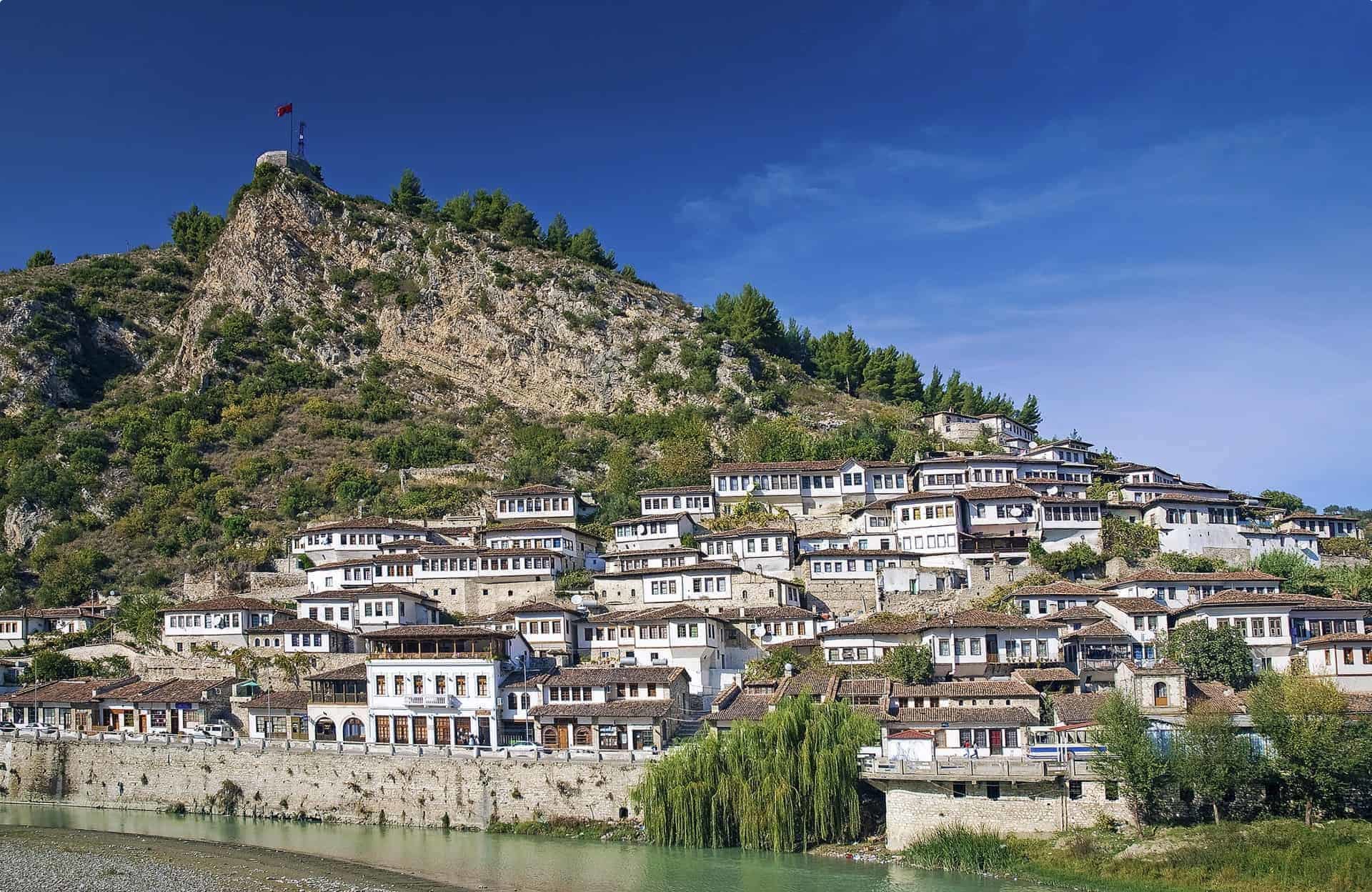
Across the Osum River lies the Gorica neighborhood. The town has a beautiful arched bridge, built in 1780 in order to connect Gorica with Mangalemi.
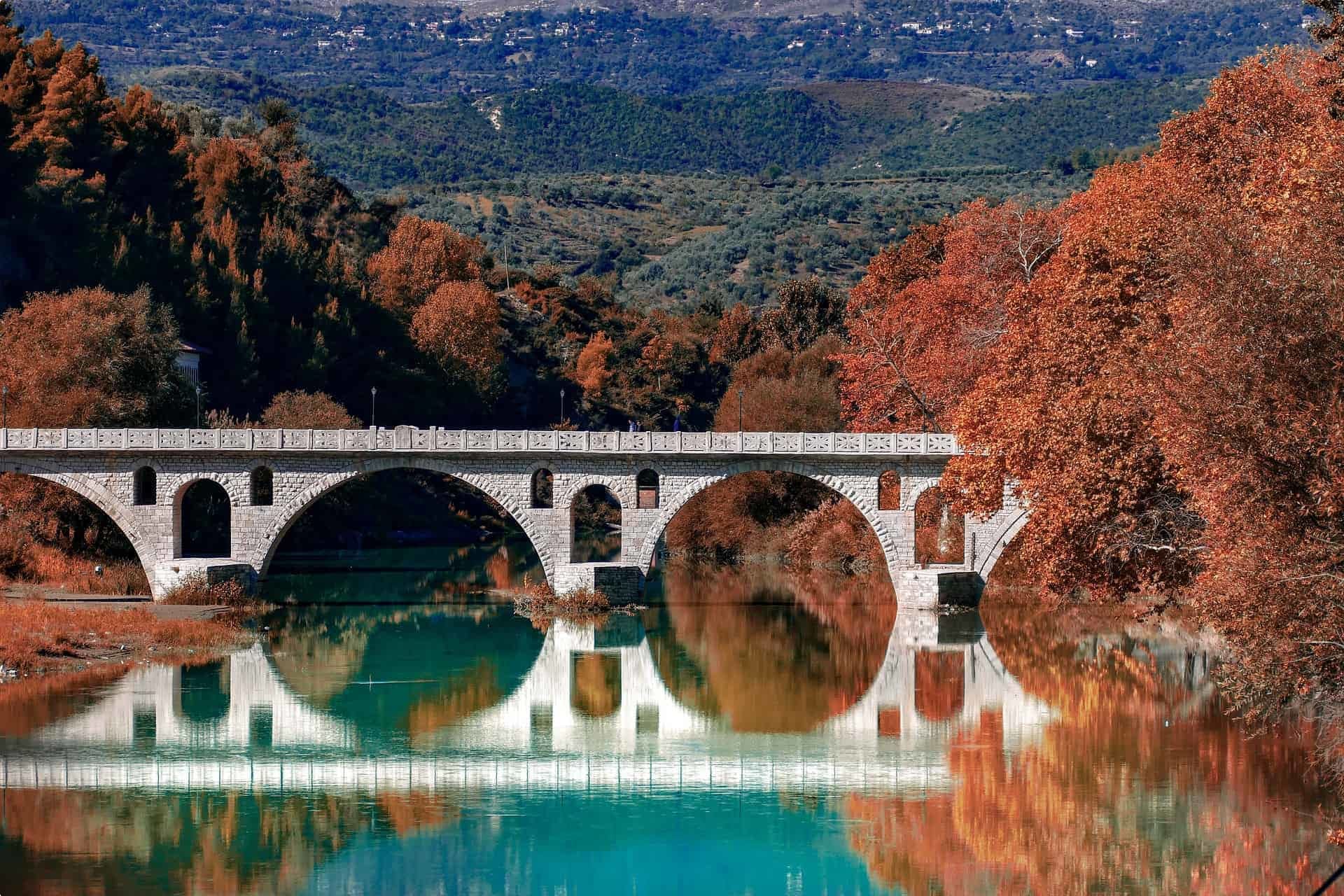
Berat is a UNESCO World Heritage Site along with Gjirokastra, hometown of Albanian leader Enver Hoxha. Known as the “City of Stone”, Gjirokastra has a fortress overlooking the town, houses built like small fortresses, and cobblestone streets leading to a mosque in the bazaar. Enver Hoxha’s house has been preserved as an ethnographic museum.
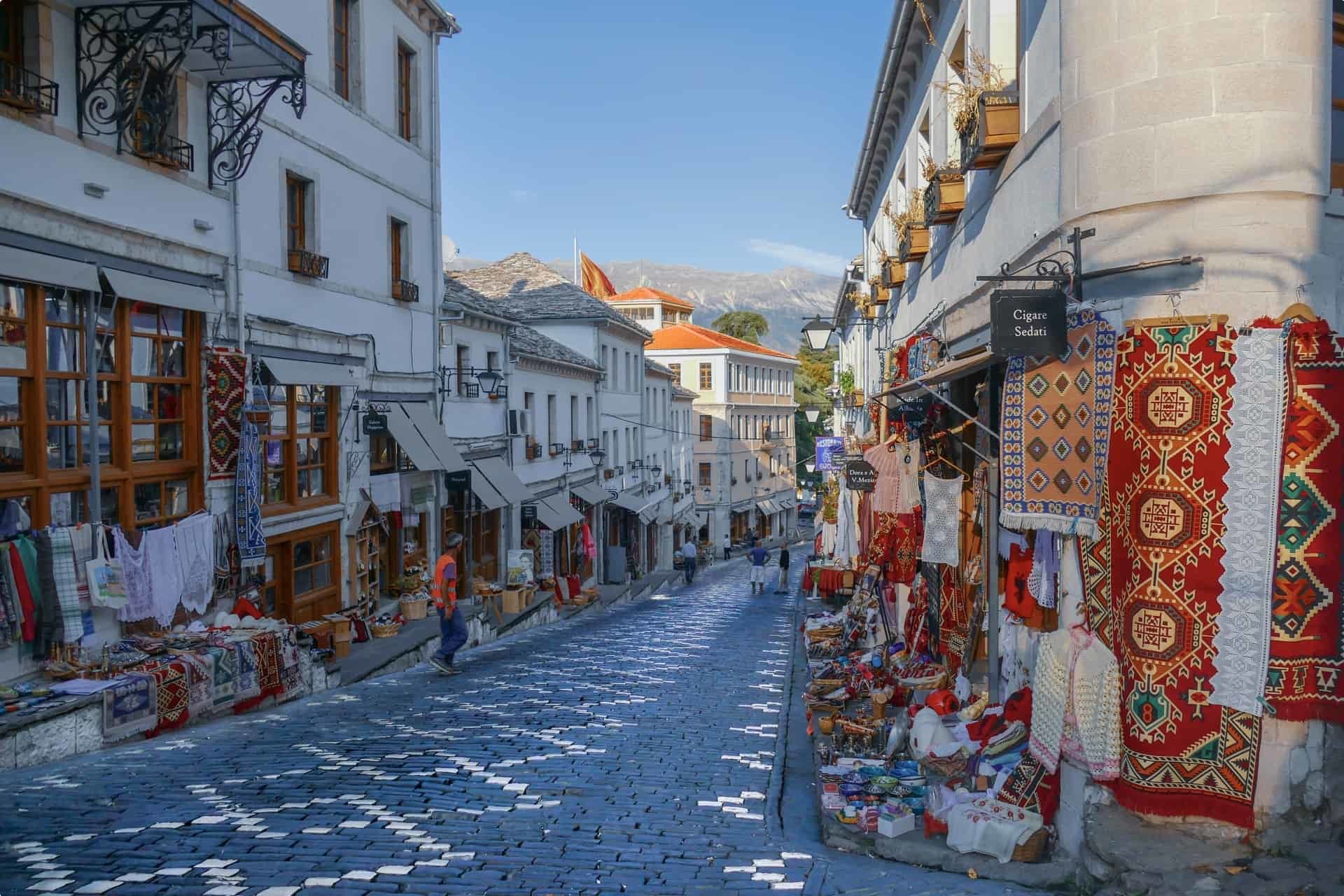
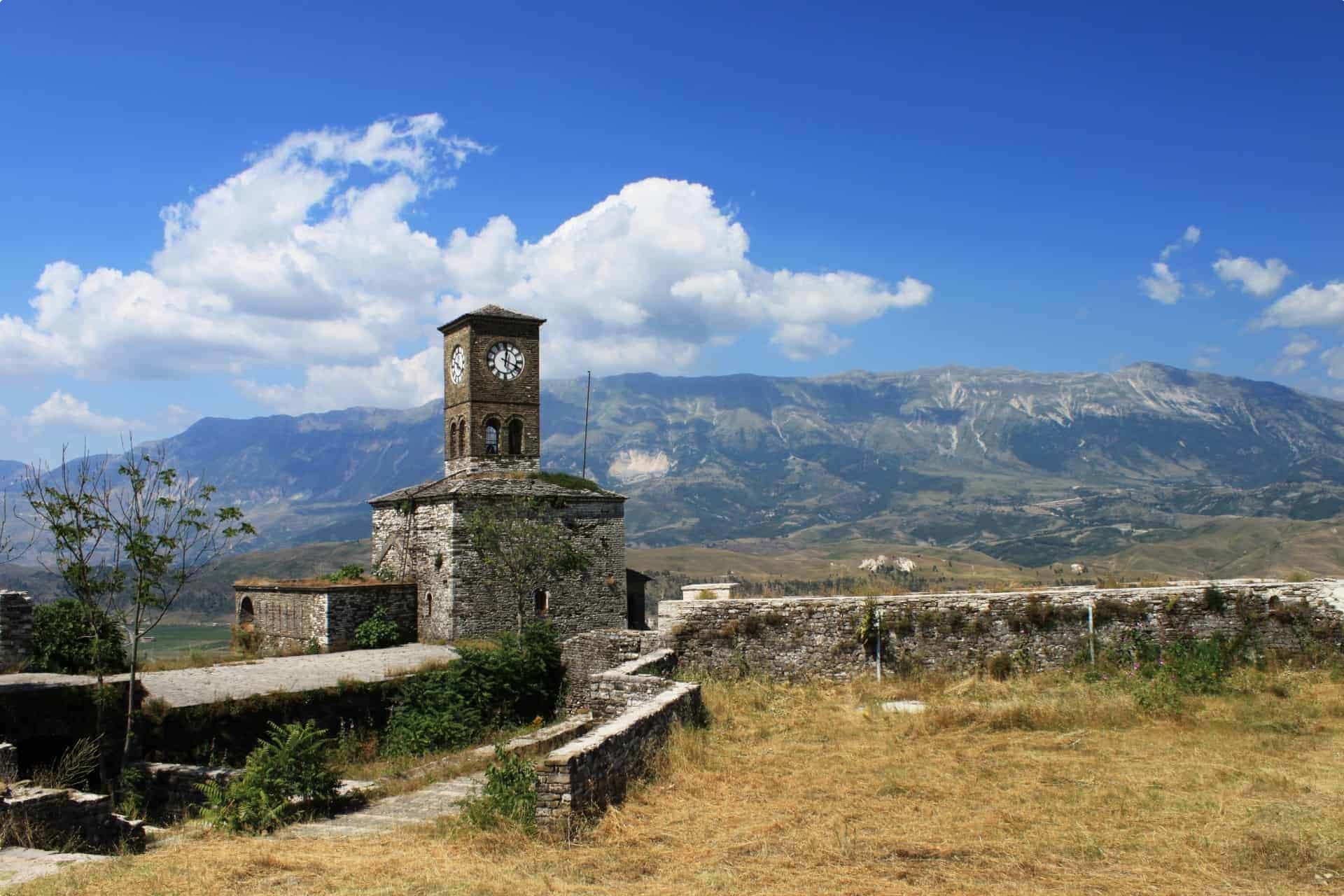
Another World Heritage Site is the Archaeological Park of Butrint, located in the southernmost part of Albania. Butrint, known in ancient times as Buthrotum, was an important settlement for the Greeks and the Romans as it was near the Greek island of Corcyra (present-day Corfu) on the route from Italy to Greece down the Ionian Sea. It was mentioned by Virgil in the Aeneid as the site where the Prince of Troy, Aeneas, stops on his way to Rome. The Romans claimed the settlement was founded by Helenus, son of the Trojan King Priam and twin brother of prophetess Cassandra.
It came under Byzantine control in the 9th century, followed by a string of foreign powers. The present archaeological site nestled in a national park represents each period in the city’s history. Among notable sites are the remains of a Roman monument, transformed into a baptistery as the empire transitioned from polytheism into monotheist Christianity as its dominant religion.

About 20 km from Butrint is the coastal town of Saranda, known for its deep, blue waters and bustling nightlife. It is a popular entryway to Albania for travellers coming from Greece, and a great jump-off point for nearby beaches.

North of the country are the Accursed Mountains, also known as the Albanian Alps, stretching from northern Albania to Kosovo and eastern Montenegro. Its peak in Albania is the Maja Jezercë which stands at 2,694 metres (8,839 ft). The mountain range earned its ominous name as the peaks were perceived as insurmountable. It is a popular site for hiking between the villages of Valbona and Theth, a five- to seven-hour walk that is easy enough to be attempted by novice mountain walkers.

Colourful and trendy Tirana is the nation’s capital. The cosmopolitan heart of Albania, with its art galleries, museums, and cafes, Tirana is a modern foil to the ancient cities and ruins of the country. An interesting structure is the Pyramid of Tirana, originally built as the Enver Hoxha Museum. Used for various activities after the fall of Communism and once planned to be demolished, the Pyramid will soon be turned into a youth technology centre focused on computer programming, robotics, and start-ups, to be designed by Rotterdam-based firm MVRDV.
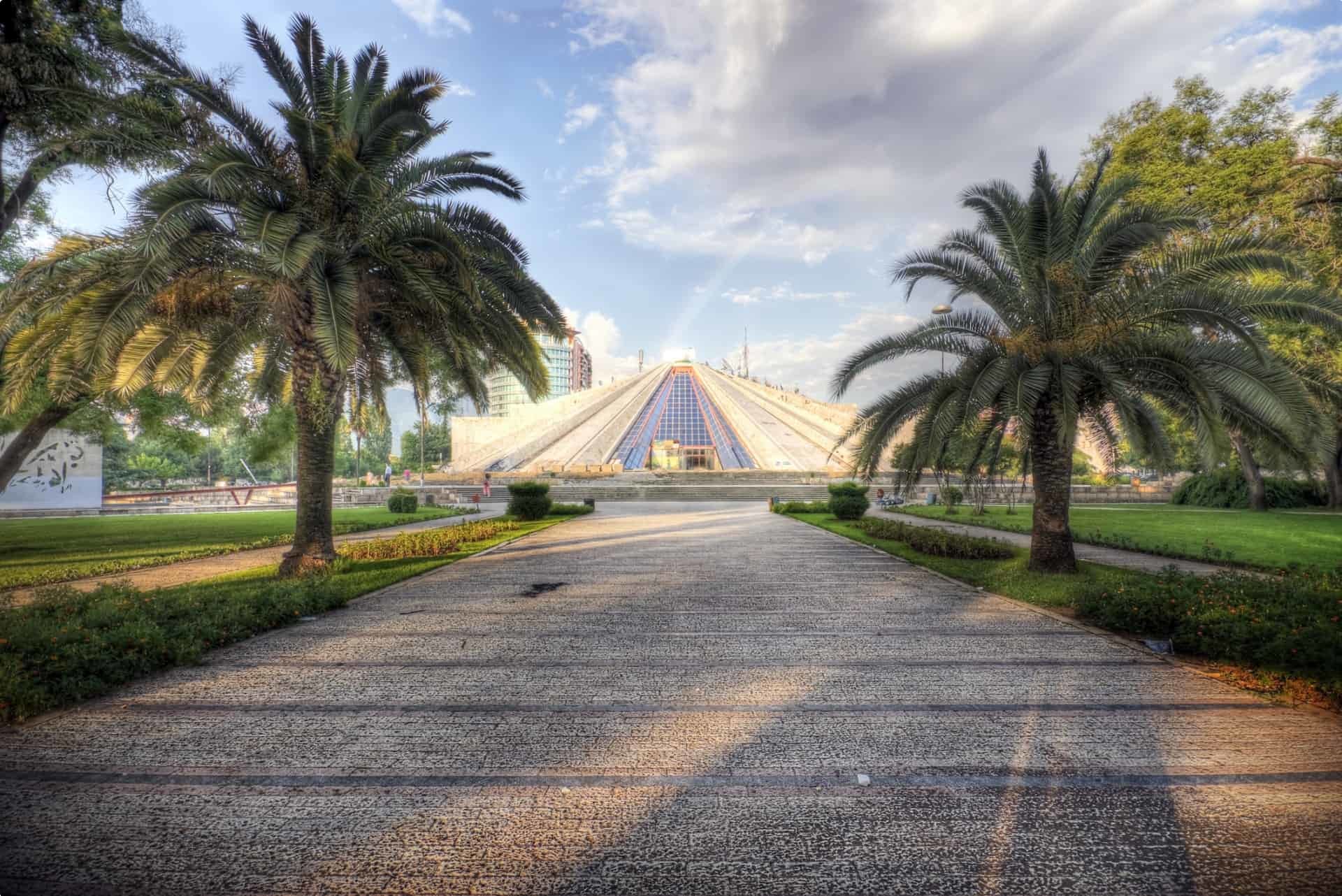
Odyssey Traveller regularly organises small group tours to the Balkans and Europe. The Balkans small group tour travels through Croatia, Bosnia & Herzegovina, Serbia, and Albania, with stops in Berat and Tirana.
The European Cities tour visits Tirana in Albania, as well as Italy, Croatia, Macedonia, and Greece.
Both tours are especially designed for senior travellers and provide a fuller picture of Albania’s important place within European and Balkan history. Click through the links to see the itinerary and sign up for the tours.
About Odyssey Traveller

Odyssey Traveller is committed to charitable activities that support the environment and cultural development of Australian and New Zealand communities. We specialise in educational small group tours for seniors, typically groups between six to 15 people. Odyssey Traveller has been offering this style of adventure and educational programs since 1983.
We are also pleased to announce that since 2012, Odyssey Traveller has been awarding $10,000 Equity & Merit Cash Scholarships each year. We award scholarships on the basis of academic performance and demonstrated financial need. We award at least one scholarship per year. We’re supported through our educational travel programs, and your participation helps Odyssey Traveller achieve its goals.
For more information on Odyssey Traveller and our educational small group tours, do visit and explore our website. Alternatively, please call or send an email. We’d love to hear from you!
Related Tours
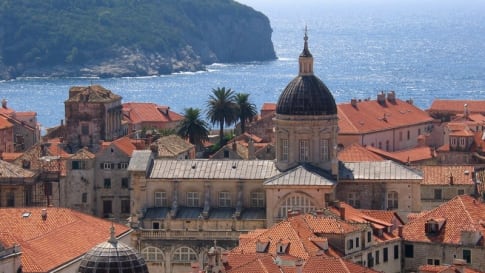
19 days
SepBalkans escorted small group tour
Visiting Albania, Bosnia and Herzegovina, Croatia
An 19 day small group tour tour takes you deep into the the Balkan Peninsula. Starting in Dubrovnik, travel through Croatia, Bosnia & Herzegovina, Serbia, Macedonia and Albania before returning to Dubrovnik.
From A$12,650 AUD
View Tour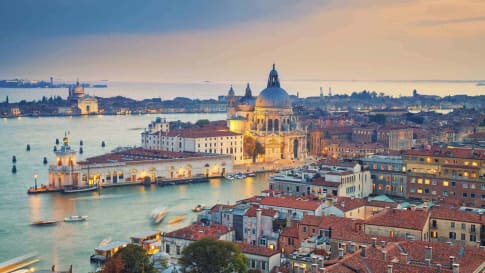
27 days
DecEuropean Cities Small Group History and Cultural Winter Tour
Visiting Albania, Croatia
An escorted tour A Journey that commences in Rome and takes in 12 destinations along its journey to Athens. This is an off season small group journey with like minded people. A small group tour across Southern Europe with local guides sharing authentic in-country authentic experiences for mature couples and solo travellers.
From A$17,295 AUD
View Tour